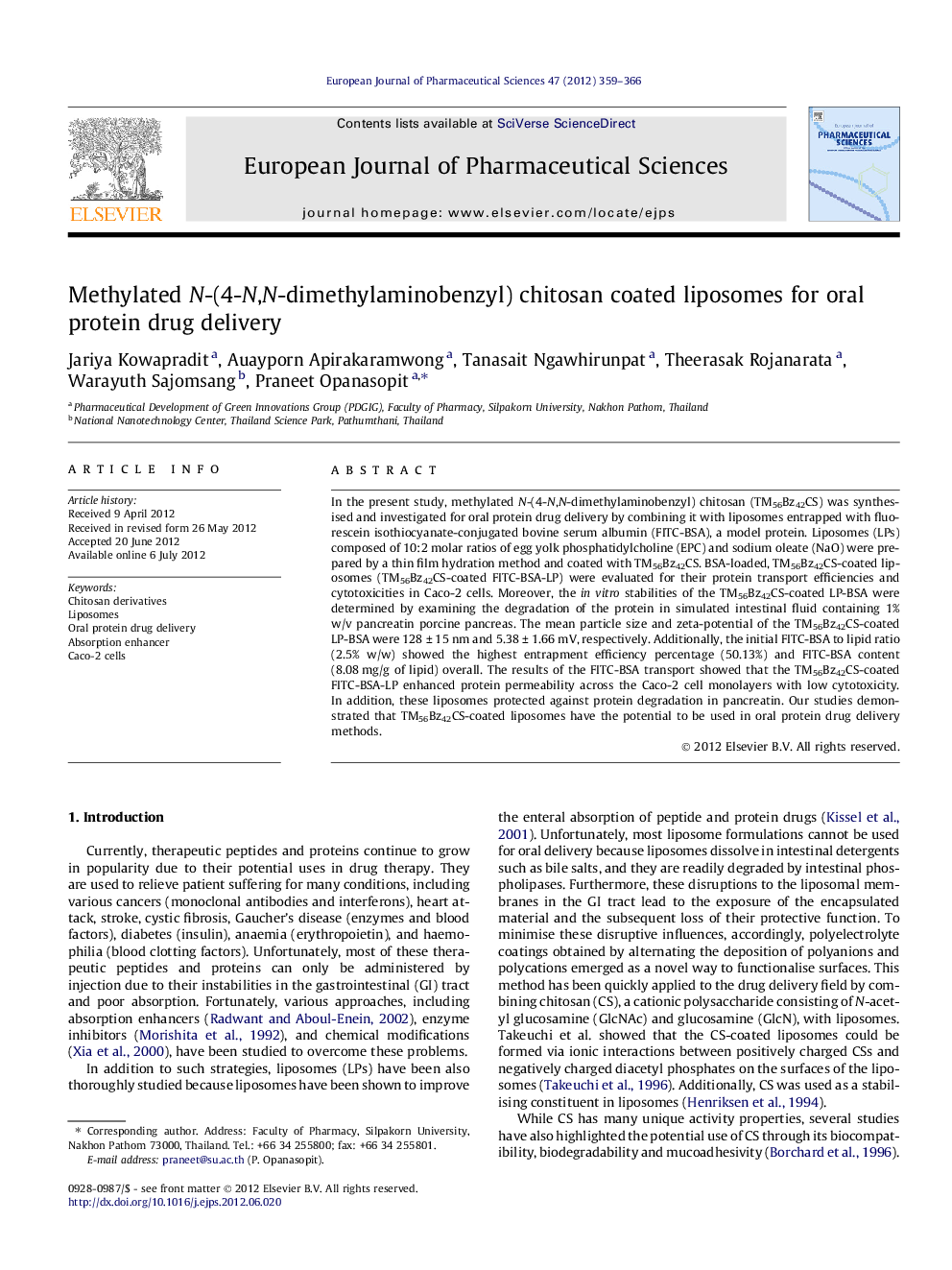| Article ID | Journal | Published Year | Pages | File Type |
|---|---|---|---|---|
| 5810151 | European Journal of Pharmaceutical Sciences | 2012 | 8 Pages |
In the present study, methylated N-(4-N,N-dimethylaminobenzyl) chitosan (TM56Bz42CS) was synthesised and investigated for oral protein drug delivery by combining it with liposomes entrapped with fluorescein isothiocyanate-conjugated bovine serum albumin (FITC-BSA), a model protein. Liposomes (LPs) composed of 10:2 molar ratios of egg yolk phosphatidylcholine (EPC) and sodium oleate (NaO) were prepared by a thin film hydration method and coated with TM56Bz42CS. BSA-loaded, TM56Bz42CS-coated liposomes (TM56Bz42CS-coated FITC-BSA-LP) were evaluated for their protein transport efficiencies and cytotoxicities in Caco-2 cells. Moreover, the in vitro stabilities of the TM56Bz42CS-coated LP-BSA were determined by examining the degradation of the protein in simulated intestinal fluid containing 1% w/v pancreatin porcine pancreas. The mean particle size and zeta-potential of the TM56Bz42CS-coated LP-BSA were 128 ± 15 nm and 5.38 ± 1.66 mV, respectively. Additionally, the initial FITC-BSA to lipid ratio (2.5% w/w) showed the highest entrapment efficiency percentage (50.13%) and FITC-BSA content (8.08 mg/g of lipid) overall. The results of the FITC-BSA transport showed that the TM56Bz42CS-coated FITC-BSA-LP enhanced protein permeability across the Caco-2 cell monolayers with low cytotoxicity. In addition, these liposomes protected against protein degradation in pancreatin. Our studies demonstrated that TM56Bz42CS-coated liposomes have the potential to be used in oral protein drug delivery methods.
Graphical abstractDownload high-res image (189KB)Download full-size image
